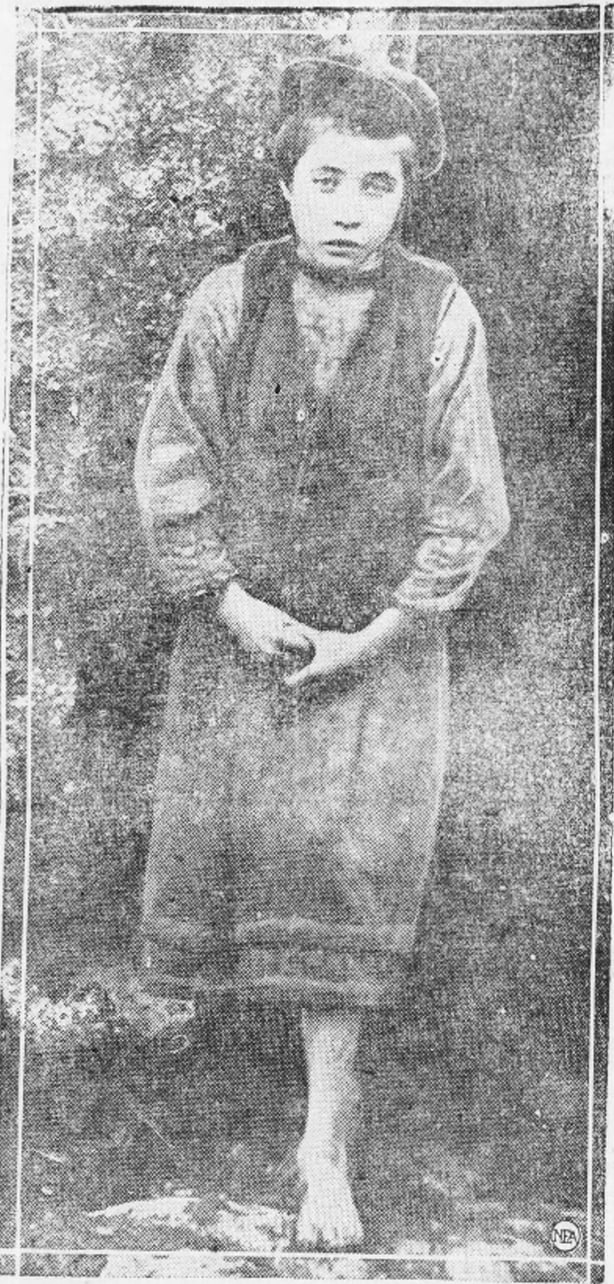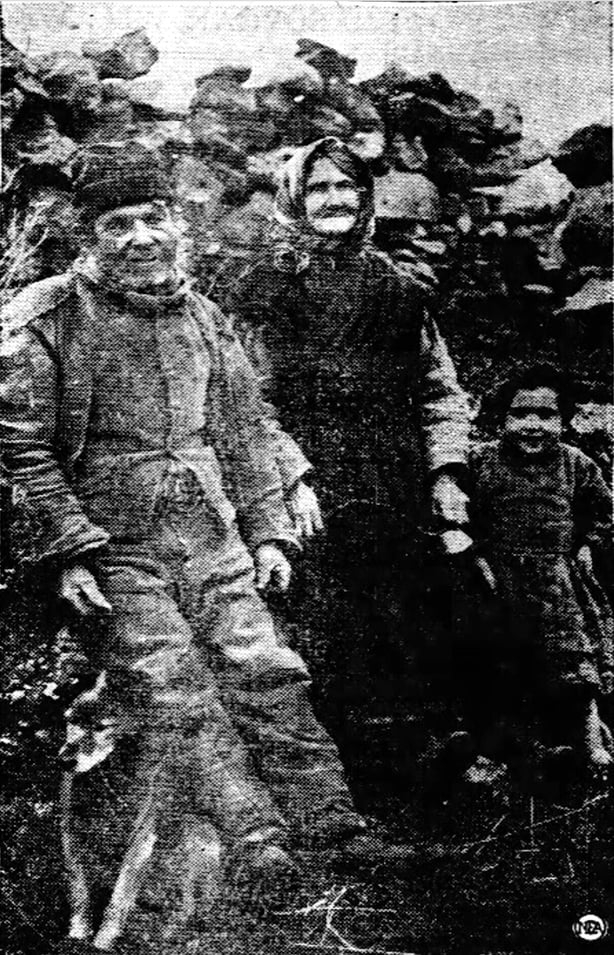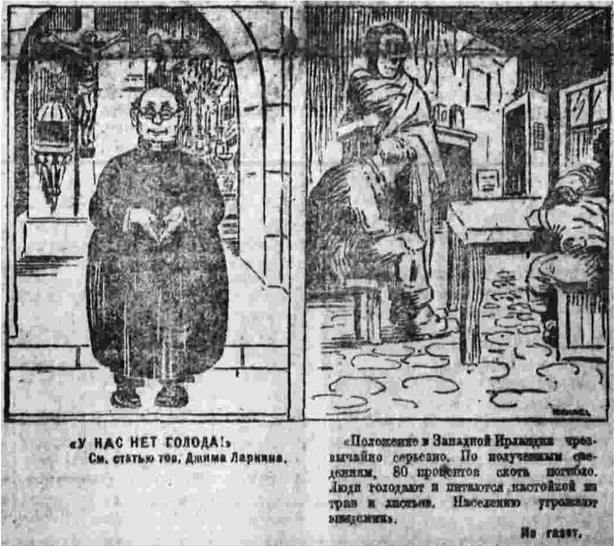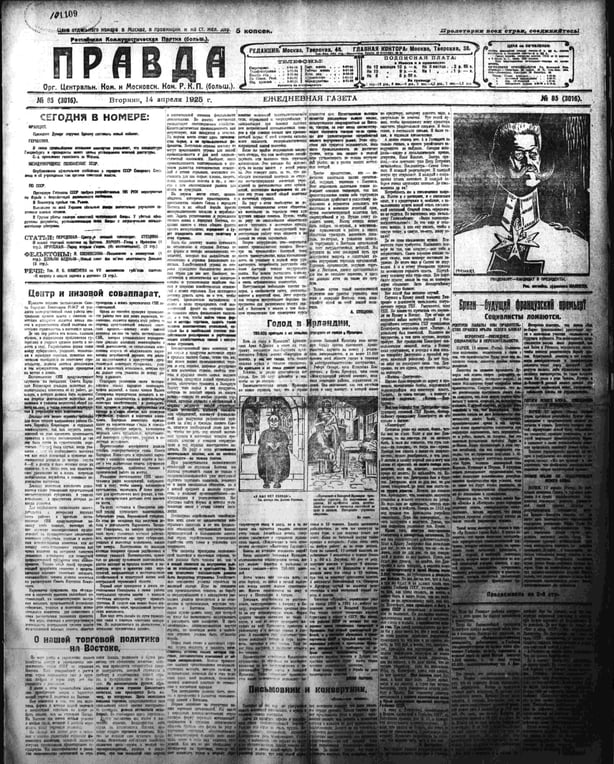Analysis: the 1925 food supply crisis in Ireland generated unprecedented American newspaper photography with far-reaching consequences
When photography told the story of Ireland's 1898 food supply shortage, nobody could have imagined that a picture from that year would make a cameo appearance during the 1925 food supply crisis. Yet, the Manchester Guardian headline 'The Famine in Ireland’ on 6 February 1925 improperly reproduced an iconic 1898 photograph of a hungry family in its Connemara cabin to illustrate current conditions.
It was a remarkable turnaround for an English newspaper that otherwise faithfully and extensively covered Ireland’s recurring post-Famine food supply crises. But, unusually, the Manchester Guardian reportage was on the back foot in 1925. Across America and Canada, dozens of newspapers were about to publish Milton Bronner’s unprecedented photojournalism of hunger, and fuel shortage, in Ireland.
Bronner was the London correspondent of the San Francisco-based Newspaper Enterprise Association (NEA), syndicating news and content to more than 400 newspapers. Following his visit to Ireland with a photographer, the NEA published the first of three articles by Bronner under the stark banner headline ‘Irish famine story at first hand’. Bronner underlined how the ‘one–room hovel’, shown in the Canadian Victoria Daily Times photograph above, was typical of thousands of homes in Galway, Mayo, Donegal and Kerry, ‘where the potato and turf shortage was most keenly felt’.

Bronner found Mrs Bartley Connelly living in such a setting in Galway and recorded her description of how 'the potatoes were washed away or rotted' after constant rain, and how 'the turf melted away with the wetness. No food for the pot. No turf for the fire'. He referenced several of the eight Connelly huddled indoors together for warmth.
But the closely-cropped, compelling image of an unrelated child looking into the camera, seen in the New York State Star Gazette example above, became the favourite and most frequently published American newspaper photograph. Bronner’s evocative claim in the caption undoubtedly secured its popularity – ‘The woes of the whole West of Ireland famine region are written in the face of this sad and frightened little boy, found near Galway’. Such mingling of carefully chosen visual and written imagery delivered a potent journalistic unison.
Moreover, Bronner pointed to the welfare inadequacies of the boy's petticoat and 'feet bare in winter time’.
Bronner’s welfare concern focused on older people when he moved 60 km west of Galway City to an impoverished island community on the Atlantic coast. His ‘Irish old folk facing famine on Lettermullen Island’, from the Indianapolis Times example below, featured two of the oldest island people. The man ‘always has raised his own potatoes. This year he has almost none’. His suit ‘if you can call it such [was] made of sacking’. Significantly, the visual composition included a (neighbour’s) child – evoking the conventional inclusion of the starving child in famine photography.

Other island children feature in the 'Lettermullen Island family and Inisheer currachs' photograph from the Dayton Daily News in Ohio. Though the view of the mother’s feet was occluded, Bronner informed readers that all five of her children were barefooted. The inset image of Inisheer currachs and their boatmen fascinated Bronner when he visited the Aran Islands on a steamer, bearing government relief with food, flour and coal.
Bronner asserted that the Irish Free State government had ‘risen well to the occasion’ by allocating £500,000 for relief, providing 6,000 tons of coal and mid-day school meals of bread, margarine and cocoa to 18,000 schoolchildren. Inis Mór parish priest, Fr Walsh, informed Bronner that American money provided islanders with an occasional sack of flour and coal when turf was unavailable. In ‘the present bad times’, the priest explained, the money provided potatoes, bread and tea – while luxuries beyond ‘ordinary use’ included meat, milk, eggs and jam.

Unsurprisingly, Bronner’s persuasive photojournalism generated a humanitarian response in America. Cardinal Patrick Joseph Hayes, archbishop of New York whose parents were originally from Kerry, offered $25,000 (£5,000) to relieve distress in the west of Ireland. The Irish press devoted significant coverage to the much-publicised cablegram of gratitude to Hayes from Patrick O’Donnell, the archbishop of Armagh and soon-to-be cardinal.
O’Donnell was keen to support the Irish Free State government’s view that conditions did not amount to famine. He informed Hayes that there was no famine, or – significantly – any need for a public appeal, although – equally significantly – the aid ‘will be very useful’. By mid-April, O’Donnell’s famine denial made its way to Russia. A political cartoon in Pravda depicted a seemingly well-fed, though un-named, O’Donnell juxtaposed alongside an Irish peasant’s cabin showing three hungry, dejected figures without food.

The political cartoon illustrated a well-informed front page Pravda article headlined ‘Famine in Ireland, 750,000 peasants and their families are suffering from hunger’. It denounced O’Donnell’s famine denial, protesting that ‘The peasants of Ireland disagree’. The author admonished the English press – the Manchester Guardian excepted – for paying no attention to Irish hunger. He accused the Irish Free State government of being in cahoots with the imperial government in London. He acknowledged the famine experience endured by Pravda readers during 1920/21 and appealed for their support.
Finally, he hoped for the arrival at Dublin of ‘a red ship under the red banner’, believing it would greatly help and have political significance. (Little happened, apart from the Russian Red Cross directing £500 for famine relief in Ireland.) The author was Jim Larkin, the trade union leader and then recently elected member of the Communist International (Comintern).

Last in Ireland’s post-Famine series of such events, the 1925 food supply crisis generated American newspaper photography with far-reaching consequences. A sympathetic English newspaper succumbed to journalistic impropriety; American humanitarianism was once again stirred into action; an Irish government and archbishop united in their denial of famine; an Irish episcopal pronouncement featured in a front-page Pravda political cartoon; and Ireland’s best-known labour activist was happy to exploit its hungry peasantry in the influential newspaper of the Soviet Union Communist Party.
Bronner’s empathetic pictures may have painted a thousand metaphorical words in America, but they certainly produced more than a thousand words in print across two continents and three months in 1925.
The views expressed here are those of the author and do not represent or reflect the views of RTÉ




